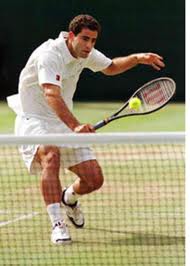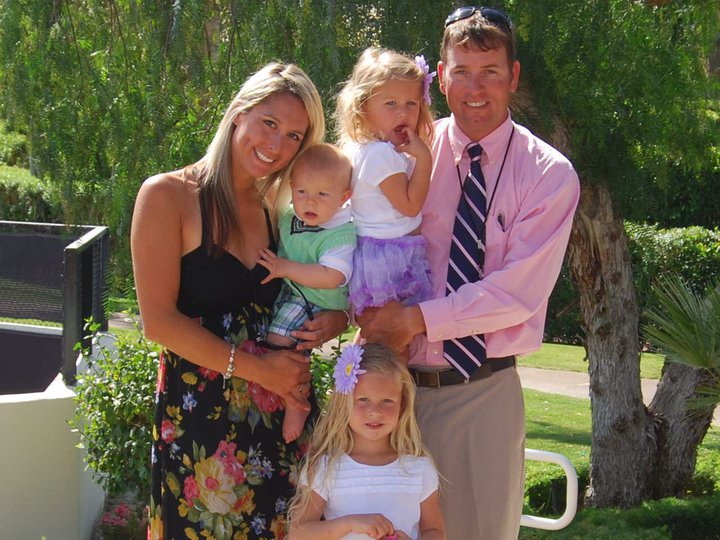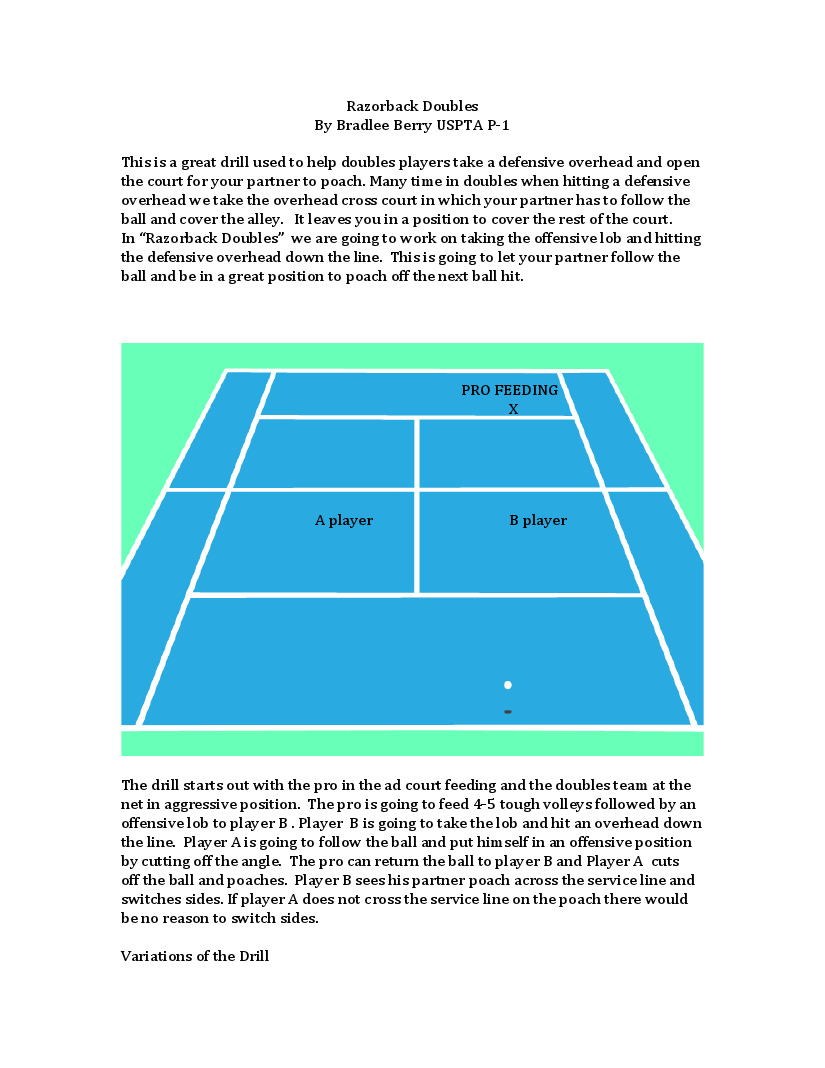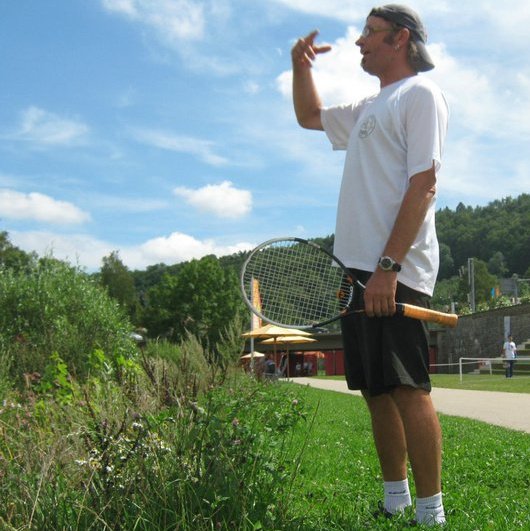Steal This Drill: 1-up 1-back variation
 Wednesday, February 29, 2012 at 12:30PM
Wednesday, February 29, 2012 at 12:30PM  CAtennis
CAtennis  We've all done this drill: one player (coach) is at the net, the other is at the baseline. The net player moves the baseline player around the baseline thereby providing him with repetition and the opportunity to work on good footwork (due to shorter reaction time). There are a few downsides to this drill including (1) the baseline player is hitting against a ball that has little topspin (i.e., unrealistic for a run-of-the-mill baseline exchange); and (2) the baseline player can get winded pretty quickly (resulting in a practice of poor quality).
We've all done this drill: one player (coach) is at the net, the other is at the baseline. The net player moves the baseline player around the baseline thereby providing him with repetition and the opportunity to work on good footwork (due to shorter reaction time). There are a few downsides to this drill including (1) the baseline player is hitting against a ball that has little topspin (i.e., unrealistic for a run-of-the-mill baseline exchange); and (2) the baseline player can get winded pretty quickly (resulting in a practice of poor quality).
To break things up, the net player should not only move around at the net and force the player to guide the ball towards various targets but he should also try to provide the baseline player with some top-spin shots. How does one achieve this from the net? The answer is that the net player can volley into his side of the court first and then, after the ball clears the net, it strikes the court on the baseline player's side of the court as well. That is, imagine a ping-pong serve where the ball must bounce on the server's side of the court first and then on the receiver's side. This action cause the ball to pick up some topsin from the ground which is then translated into a topsin shot on the baseliner's side of the court. With some practice, the net player can master various heights, depths and spins.
In another variant, the baseline player can try to take some of these ping-pong shots out of the air (i.e., before they bounce on his side of the court) or use these shots as put-away shots. In the latter drill, the net player/coach can feed a follow-up volley. It's amazing what can be achieved with some imagination.







